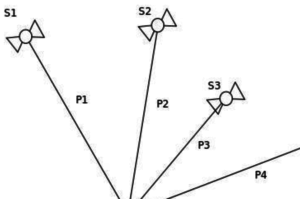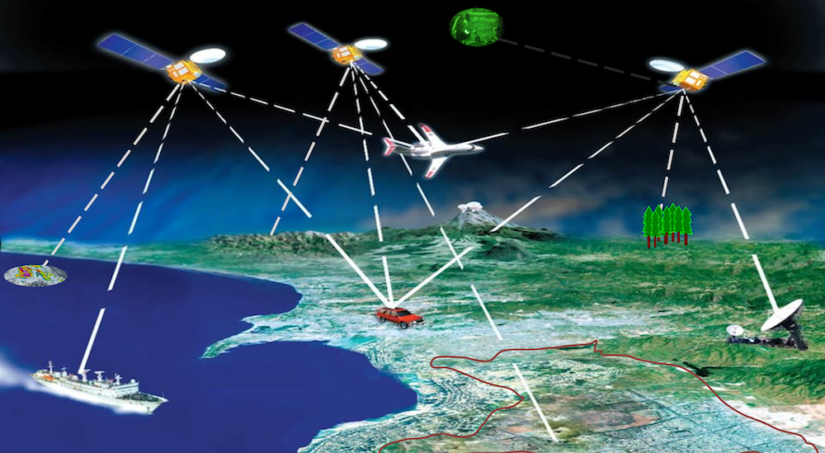Between the receiver and the satellites we have four
pseudoranges, one for each satellite. These are distances that we can initially calculate from the time of arrival (according to our local clock) and the time of transmission. We know that the pseudoranges include range errors due to the time difference between the local clock and the GPS standard, among other things, which is why they are referred to as pseudo (false) ranges.
We can now get a bit mathematical. The four pseudoranges can be described using a set of four equations that relate the x, y and z positions of the four satellites, the x, y and z positions of the receiver and the range error. This set of equations can be rearranged and solved simultaneously (a mathematical technique, not “at the same time”!) to calculate the x, y, z and T co-ordinates of the receiver.
There are various mathematical techniques available to solve these equations, none of which are simple, but once reformulated the calculations can be performed very quickly by a microprocessor. Given the speed with which modern microprocessors run, you might be tempted to ask why a GPS receiver takes at least 30 seconds to obtain a “lock” on the satellites.
The answer is that space communications are tricky. You may have heard that the deep space probes out near the edge of our solar system send data back to Earth at an agonisingly slow pace, with data rates measured in hundreds of bits per second compared with the gigabits per second of your high speed internet connection. The reason is that the transmitter is not very powerful and the distance the signals have to travel is very long. The signal gets lost in noise along the way, so we have to use some trickery to recover it.
The same is true of GPS satellites. The signal at the Earth’s surface from each satellite is around 0.3 femtowatts (1/3 of a millionth of a billionth of a watt). To recover the signal, GPS uses a similar arrangement to
CDMA (Code Division Multiple Access) that uses a mathematical technique known as autocorrelation. Autocorrelation relies on sending the same signal over and over and by adding all the copies together, the signal gets bigger while the noise averages out to zero (although the actual maths is more complex than this).
When all is said and done, each satellite has to repeat itself over and over so it takes 12 ½ minutes to send all 25 frames of its navigation message. Each frame of the navigation message is 1500 bits long and contains information about the satellite’s local time and clock offset, it’s ephemeris data, information about the ionosphere and the satellite’s status as well as a portion of the satellite
almanac. The almanac is a list of all the satellites and their orbital information although it is not as accurate as the ephemeris.
Each frame takes 30 seconds to transmit, which is why a GPS fix takes at least 30 seconds to acquire – it takes that long for the satellites to tell the receiver where they are. Because the almanac is out of date after a few months, a receiver that has been switched off for some time will have to perform a “cold” acquisition, which takes at least 12 ½ minutes because the receiver must download the entire almanac.






Comments are closed.